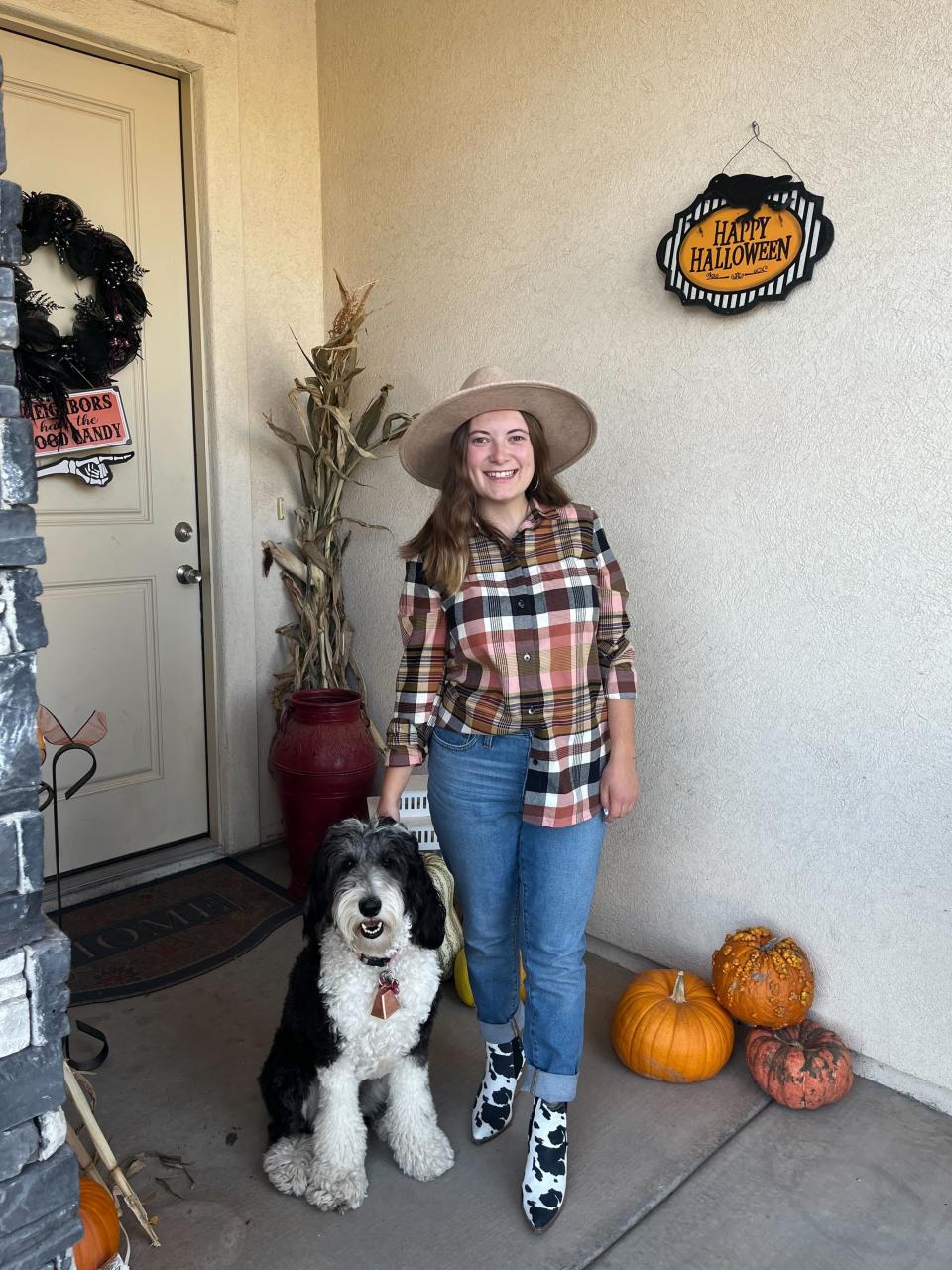Fur-ever family: Most pet owners see pets as part of their family, study finds

Should Caroline Peterson lose her 3-year-old Nala, she would “cry, call into work and say I’m not coming in for the rest of the week. That would be the worst thing that could happen.”
The 21-year-old event planner told the Deseret News that she felt as though she’d been waiting her whole life for Nala before the day three years ago when she was finally brought into the Peterson home and, thus, family.
Nala didn’t come from the hospital nursery, but from a dog breeder in Vernal, Utah.
Nala, a sheep dog and poodle mix, shows her appreciation for the adoption with fervent furry kisses and leaps of joy every time someone comes home, Peterson said.

Peterson is among the majority in the U.S. who regard their pets as part of their family, according to a study published by Pew Research Center last Friday.
And while the majority (97%) of pet owners describe their pets that way, the study said about 51% of those pet owners claim their pets “are as much a part of their family as a human member.”
Juliana Menasce Horowitz, associate director of research at Pew Research Center, told the Deseret News that this statistic was a “striking finding” to her.
“To see how, overwhelmingly, almost every pet owner said that their pet is a part of their family,” and then see “about half of pet owners say that their pets are as much a part of their family as a human member” was very interesting, Horowitz said.
Babies and fur babies
The center collected data by surveying a nationally representative panel of 5,073 U.S. adults. Other key findings included:
Sixty-two percent of Americans own a pet and about one-third (35%) of pet owners have more than one.
White and Hispanic adults, rural Americans, married people or people who are living with a partner are most likely to own pets.
Those most likely to say their pets are as vital in their family as humans were cohabitating couples (65%), families with lower income (64%), those living in urban areas (61%) and women (57%).
“To see how family situation and family arrangement affects the extent to which people see their pets” as family members was fascinating, especially considering the different demographic characteristics, Horowitz said.
“That, of course, shows a closeness with their pets, I think, that is interesting to be able to measure in a nationally representative way.”

The National Institutes of Health did a decadelong study, alongside Mars Corporation’s Waltham Centre for Pet Nutrition, that looked at the benefits of having pets.
In the study, “there’s not one answer about how a pet can help somebody with a specific condition,” said Layla Esposito, who oversees the institutes’ Human-Animal Interaction Research Program.
“Is your goal to increase physical activity? Then you might benefit from owning a dog. You have to walk a dog several times a day and you’re going to increase physical activity. If your goal is reducing stress, sometimes watching fish swim can result in a feeling of calmness. So there’s no one type fits all,” she said.
Dr. Ann Berger, a physician and researcher at the NIH Clinical Center in Bethesda, Maryland, added that an animal’s attention is constantly focused on a person. “The foundations of mindfulness include attention, intention, compassion and awareness,” which are all things animals do innately, while “people kind of have to learn it.”
Related
How to help my local animal shelter: Utah no-kill shelters at overcapacity
The CDC will update policies for dogs and cats being imported to avoid rabies endemic
The well-being of pets
The study also found that “26% of Americans say there is not enough emphasis on the well-being of pets, and an equal share say there is too much. Roughly half (48%) say there’s about the right amount of emphasis on the well-being of pets.”
This question helped Pew see how pets are perceived on a national level, regardless of pet ownership from those surveyed, Horowitz said.
She added that, of the respondents, the 37% who had no pets “were the most likely to say that there’s too much emphasis on pet well-being compared to (that of) people in the U.S.”
On the other hand, pet owners were twice as likely to say there isn’t enough emphasis on the well-being of pets.
Peterson said she didn’t have a strong opinion on the wellness of pets until she got one, to which she now agrees that more can be done to help pets.
She spends about $75 on Nala every month, including toys, special treats and supplies.
According to a study reported by USA Today, about 46% of pet owners admit they “spend the same or more per month on their furry friends as on their children.”
When asked why she spends so much on Nala, Peterson laughed and said, “Because I love my dog and want her to feel loved and spoiled.”
She added that Nala “has that much love back to us,” and “It’s a two-way thing.”
Horowitz said, “We didn’t think deeper in this particular study to really understand the role that pets play.” She added, “I think there’s a lot that we can do to understand more the place that pets occupy in people’s lives.”
The research was part of a broader study Pew Research Center conducted to understand different aspects of American family life.
